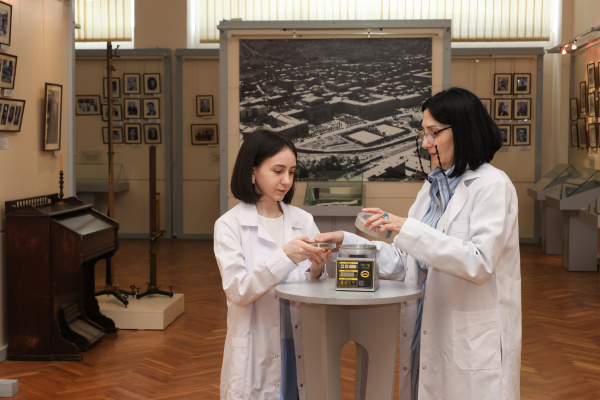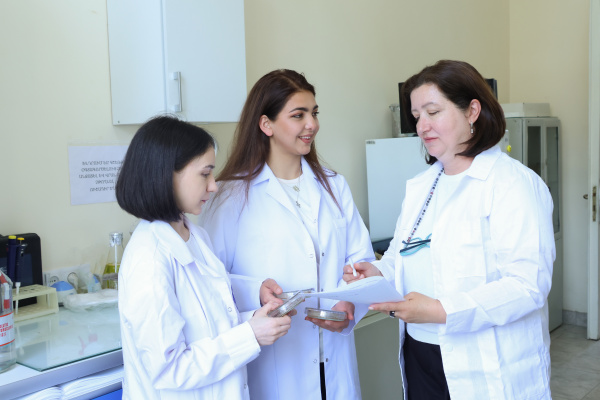May 22, 2025 | 10:11
Research
International cooperation
Competitions
YSU researchers assess air pollution in museums and propose purification methods
The ecologically unfavorable situation in the Republic of Armenia, along with air pollution by microscopic fungi in areas of various significance, leads to the contamination of cultural artifacts and the spread of fungal diseases. The presence of microscopic pathogenic fungi in the air poses a serious threat both to human health and to museum collections. This was highlighted by Inessa Eloyan, Associate Professor at the Chair of Botany and Mycology, Yerevan State University. Together with her research team, she is studying the mycobiota and pollution levels of certain museum spaces in Yerevan, proposing natural antifungal methods for air purification.

A scientific project led by Associate Professor Inessa Eloyan from the Chair of Botany and Mycology at YSU Faculty of Biology, titled "Assessment of Air Mycobiota Levels in Selected Museum Areas of Yerevan and Development of a Strategy against Pathogenic Fungi," has been approved for funding within the framework of the "Scientific Effectiveness Promotion Grant Program-2025" competition, announced by the Armenian Higher Education and Science Committee.
Museum exhibits provide an ideal environment for the growth of micromycetes—microscopic fungi. Key factors contributing to fungal development include air temperature, humidity, and the presence of dust. The aim of the project is to create a safe and healthy environment for museum visitors and staff, while also preserving museum exhibits. The PU-1B device is used for conducting mycological studies of the air.

"Air pollution, aside from damaging museum exhibits, can also seriously harm human health by causing allergic reactions and fungal infections (mycoses)," explains Eloyan. "According to WHO guidelines established in 1990, the permissible concentration of fungal spores in indoor air should not exceed 500 CFU/m³."
The researcher regularly monitors the air mycobiota in kindergartens, schools, and museums across different cities in Armenia to determine fungal contamination levels. Mycological studies have already been conducted at the State Museum of Nature and the house-museums of Avetik Isahakyan and Martiros Saryan, with plans to expand the list of museums studied.
"Our research revealed that in the storage rooms of the State Museum of Nature, the air contamination levels were above the acceptable limit. In fact, some museum staff frequently report health issues, which motivated us to continue investigating this topic," Eloyan said.
Commenting on recent work, she added: "Our research team recently studied the air mycobiota at YSU History Museum named after Prof. L. Gharibjanyan. We found that in the storage areas, where books are mainly kept, air contamination levels exceeded the norm. We provided the museum with thyme essential oil, which can be diffused into the air using a special device. Thyme oil is a natural antifungal agent. After one month of use, we will conduct another study to determine how much the air contamination level has decreased."

To purify the air, the research team will use essential oils derived from locally grown plants such as thyme, yarrow, and pelargonium, which they will extract themselves.
The research team includes Associate Professor Iren Shahazizyan, researcher Ruzanna Adamyan, junior researcher Margarita Mkrtumyan, and undergraduate student Khanum Vardanyan from the Faculty of Biology. Their foreign advisor is Professor Alexander Kurakov from Lomonosov Moscow State University.
As part of the project, the team will also visit Moscow State University, where the fungal species identified based on morphocultural characteristics will be further verified using PCR and sequencing methods.

